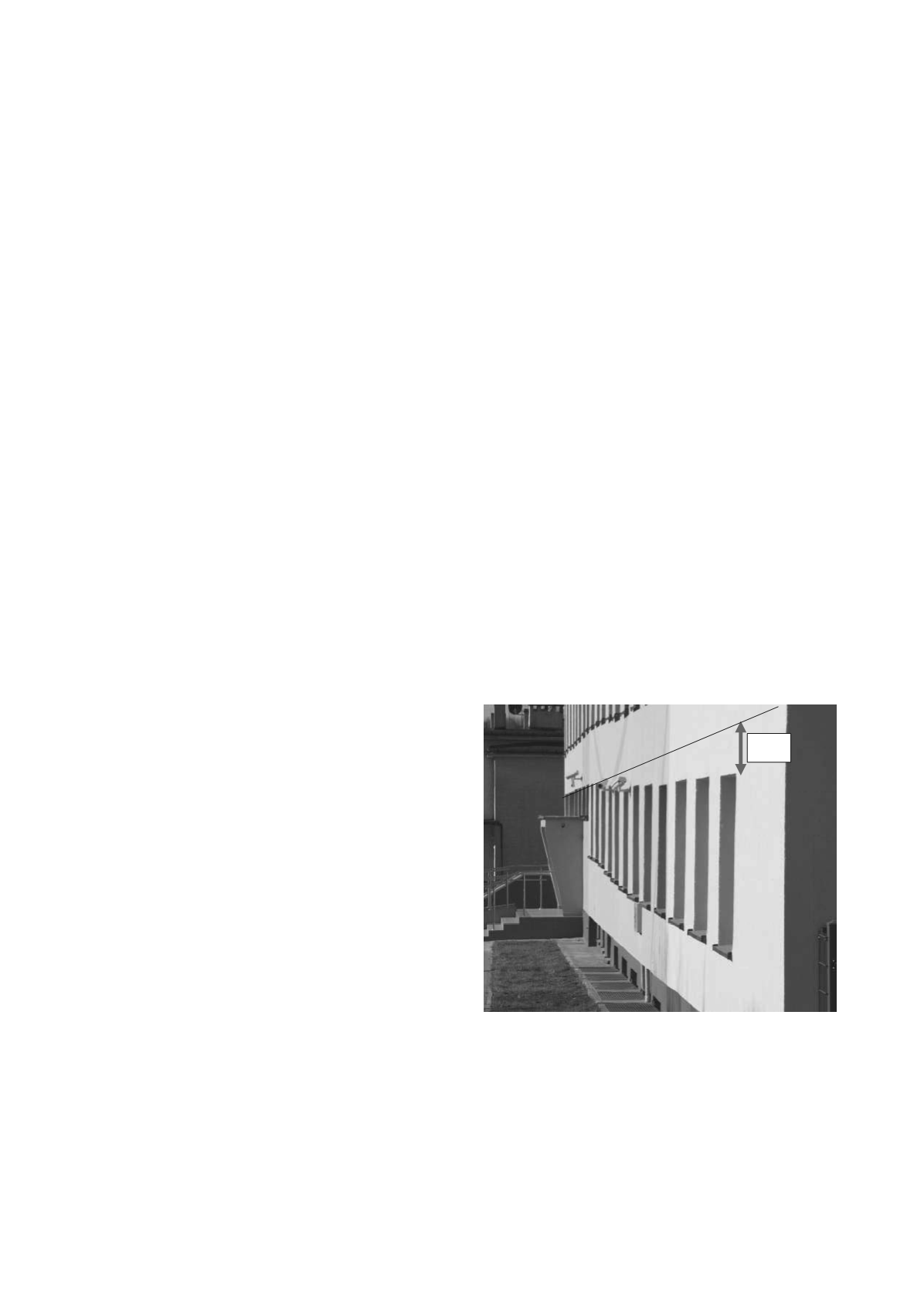
373
The expansive properties of Pol
and’s
clay subsoil
Propriétés de l'argile expansive de substrat de la Pologne
Kumor M. K.
Geotechnical Department, University of Technology and Life Sciences, Bydgoszcz, Poland
ABSTRACT: The paper presents the expansive properties of Neogen
clays of the Poznań series that form the foundation stratum of
Northern Poland. The phases of swelling and shrinkage of expansive clays were analysed as a function of humidity changes.
Functional relationships were determined. Expansive clays of Northern Poland are classified as soils of a very high degree of
expansiveness due to the contractibility range
(LL
–
SL)
= 82.1% > 50 %. In the natural condition, they are half-compact or, at most,
rigid-flexible. The examination results of volumetric changes in clays in shrinkage and swelling phases make it possible to determine
the range of dislocations of the foundation-expansive substratum contact zone at a free swelling or shrinkage.
RÉSUMÉ :
L’article
présente les
propriétés d’expansion
des argiles du Néogène de la série
Poznań
qui constituent la couche de
fondation du nord de la Pologne.
Les phases d’expansion et de contraction de ces
argiles ont été analysées comme une fonction des
changements
d’
humidité. Des relations fonctionnelles ont été définies. Ces argiles expansives du nord de la Pologne sont classées
comme des sols possédant un grand degré
d’
expansivité en raison de l`étendue de leur contractilité (LL - SL) = 82,1 % > 50 %. A
l’
état naturel ils sont semi-compacts ou tout au plus rigide-flexibles. L`examen des résultats des variations volumétriques des argiles
pendant les phases d`expansion et de contraction permet de déterminer
l’
éventail des dislocations de la zone de contact
foundation/sous-couche expansive lorsqu`expansion ou contraction sont libres de toute contrainte.
KEYWORDS: expansive clays of Poland, expansive parameters, swelling, shrinkage.
1. INTRODUCTION
The notion of soil expansiveness in geotechnics is usually
related to a definition of swelling, Chen (1988). As is well
known, soil expansiveness encompasses the more general
phenomena of swelling and shrinkage, Przysta
ń
ski (1991).
Shrinkage
–
is a process of reducing soil volume as a
consequence of pore water loss; it is a characteristic property
of cohesive soils with significant content of clay-like fraction.
The
swelling
of cohesive soils is a process which is opposite
to shrinkage.
From a practical point of view, expansive soils are soils that
show an increase in the initial volume in contact with water and
shrink as a result of drying. A characteristic feature here is
differentiated phases of shrinkage and swelling that always
accompany changes in humidity.
In the literature relating to classification of expansive soils, e.g.
Chen (1988), Seed et al. (1962), Sorochan (1974), van der
Merwe (1964) and others, attention is chiefly paid to the
swelling process. In the classifications, the following indicative
features are used in the first place: liquid limit
–
LL,
contractility limit
–
SL, plasticity index
–
I
p
=
(LL
–
PL)
, soil
humidity index
–
w
o
, specific surface
–
S.
In practice, there are few clay expansiveness classifications
that introduce shrinkage parameters as classification criteria,
e.g. Holtz (1959), Rangantham and Satanarayana (1965),
Niedzielski (1993). In Polish soils the expansiveness
classification developed by Niedzielski, the so called
contractility range
(LL
–
SL)
(%) was introduced to characterise
shrinkage. Four expansiveness stages were distinguished on the
basis of the range:
very high
(LL
–
SL)
> 50 %,
high 35 <
(LL
–
SL)
< 50,
medium 20 <
(LL
–
SL)
< 35,
low
(LL
–
SL)
< 20.
From an engineering point of view, the occurrence of the
substratum shrinkage phase after the swelling phase is the most
dangerous for constructions. Shrinkage brings about a post-
consolidation settlement of expan
sive clays which in Poland’s
geotechnical conditions are the principal cause of nearly all
construction failures, see Figure 1.
Figure 1. An example of a construction failure resulting from the
swelling-shrinkage cycles.
2. EXPANSIVE CLAY CHARACTERISTICS
The building substratum surface zone in Central European
conditions is exposed to specific factors, e.g. those related to
climate, atmosphere, anthropopressure, etc. Highly dispergated
clays with expansive properties are particularly sensitive to the
impact of these factors. Expansive clays, typical to nearly half
of Poland’s territory, are represented by tertiary deposits of the
Poznań series.
43 cm


